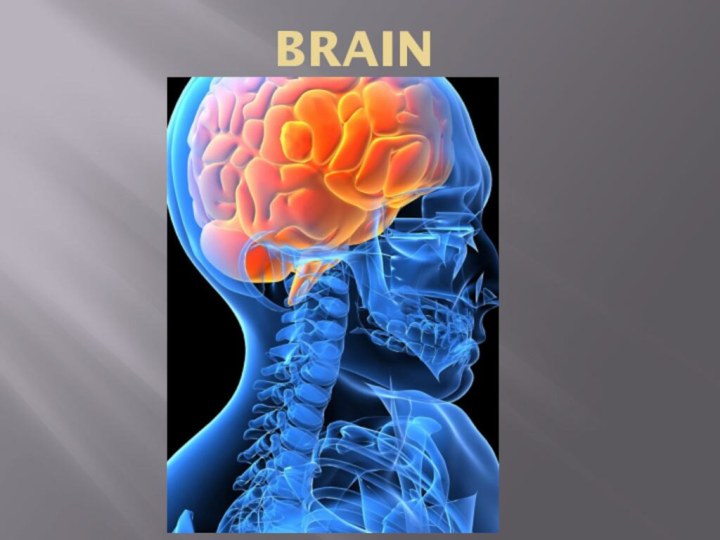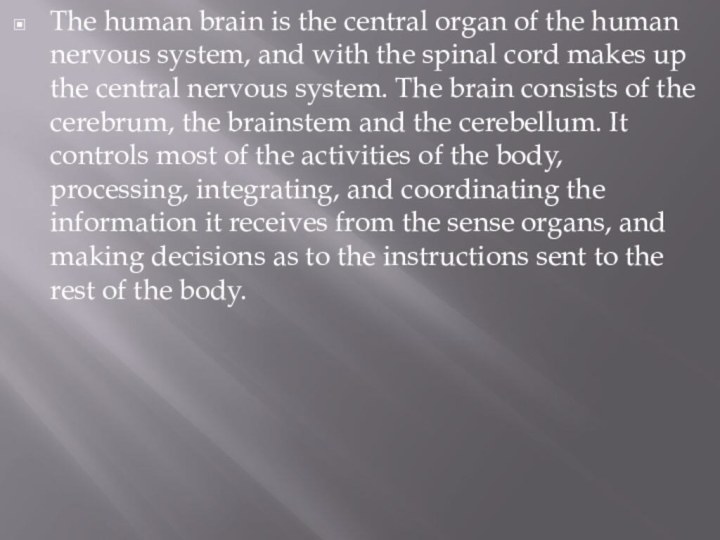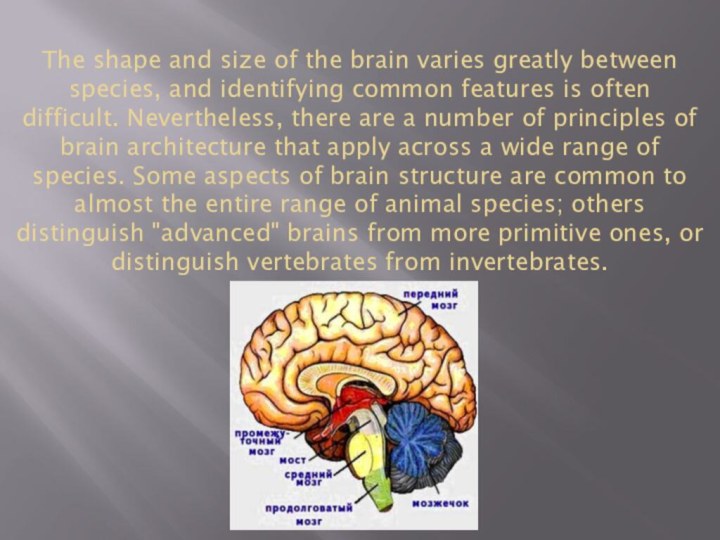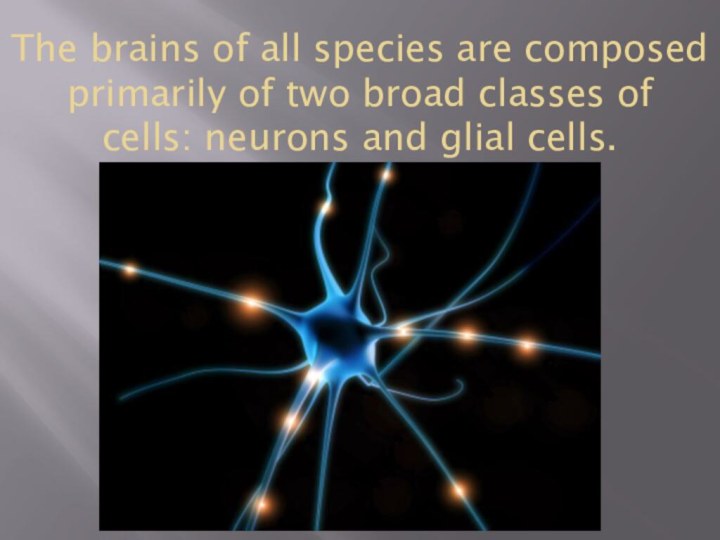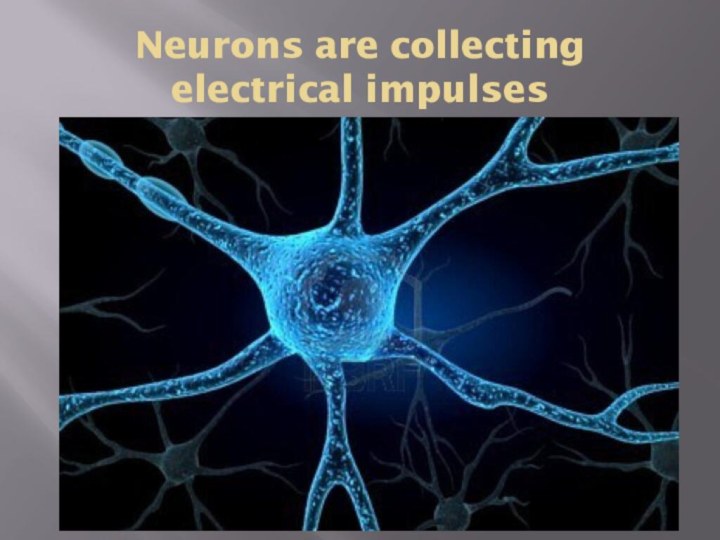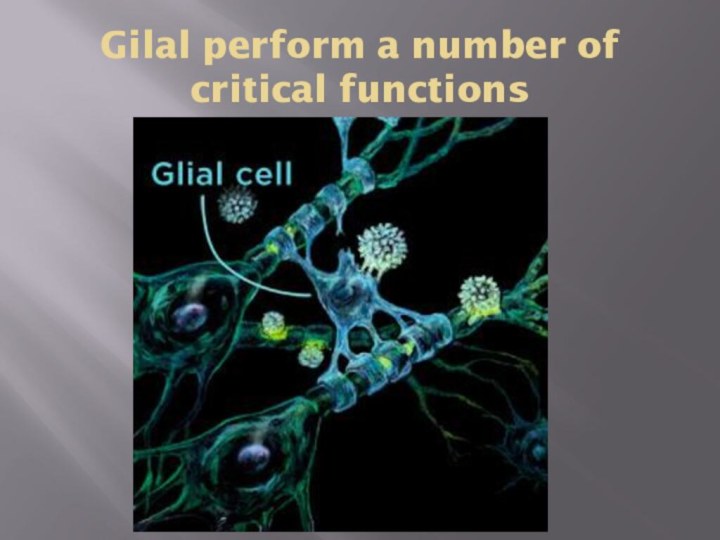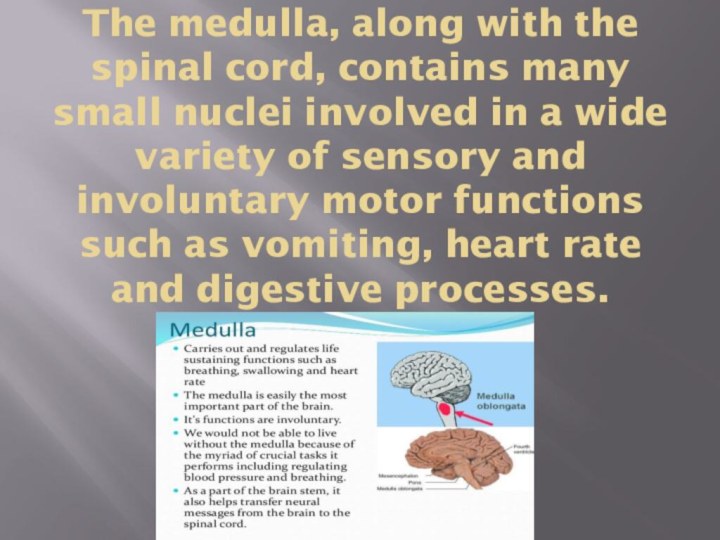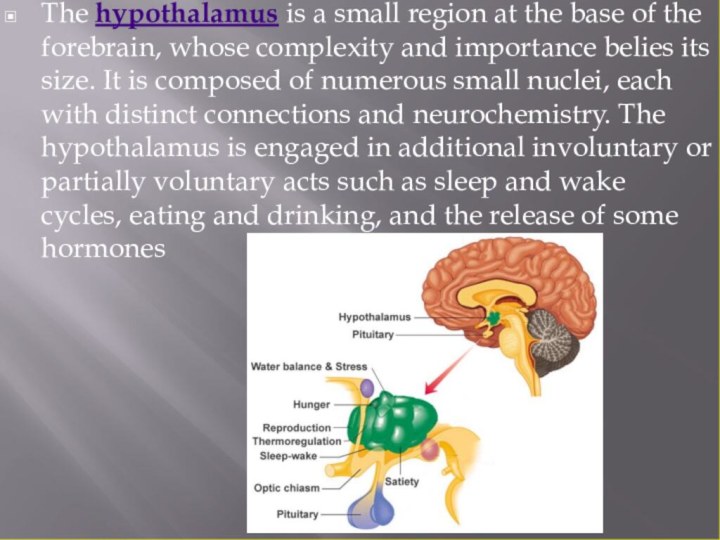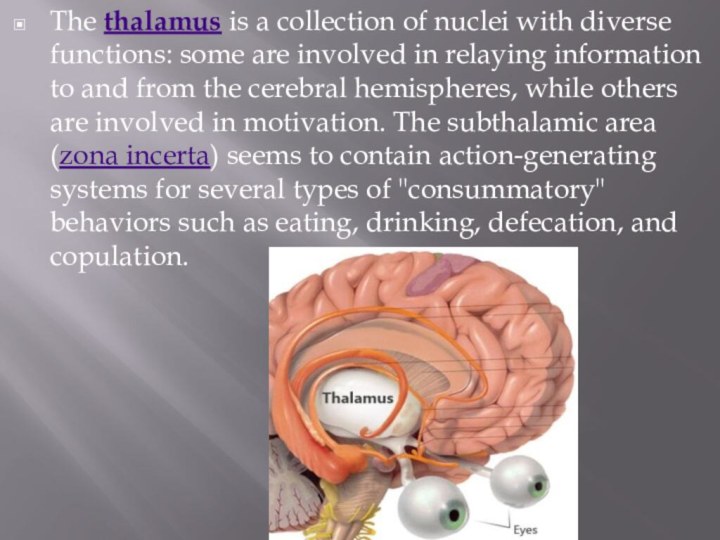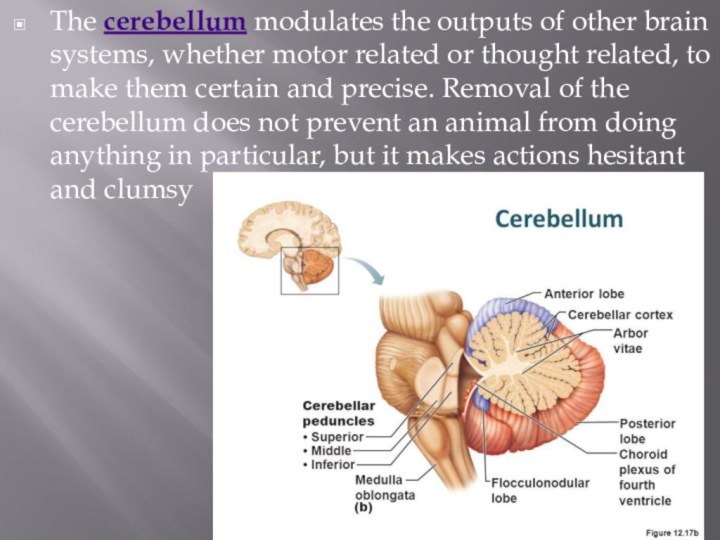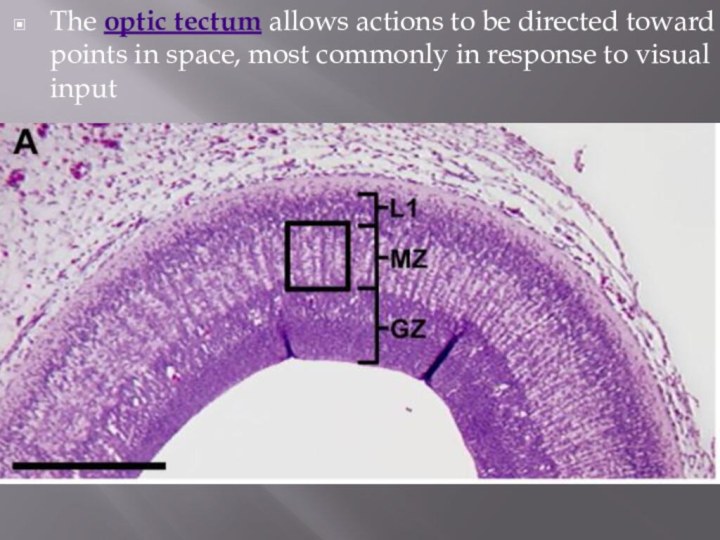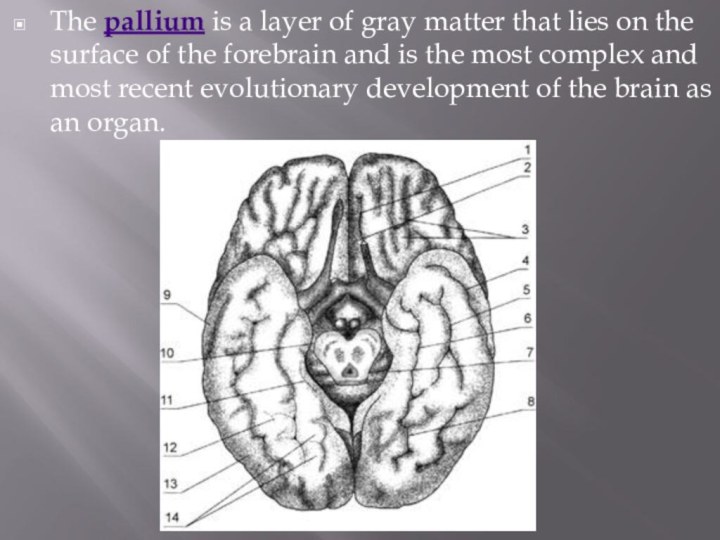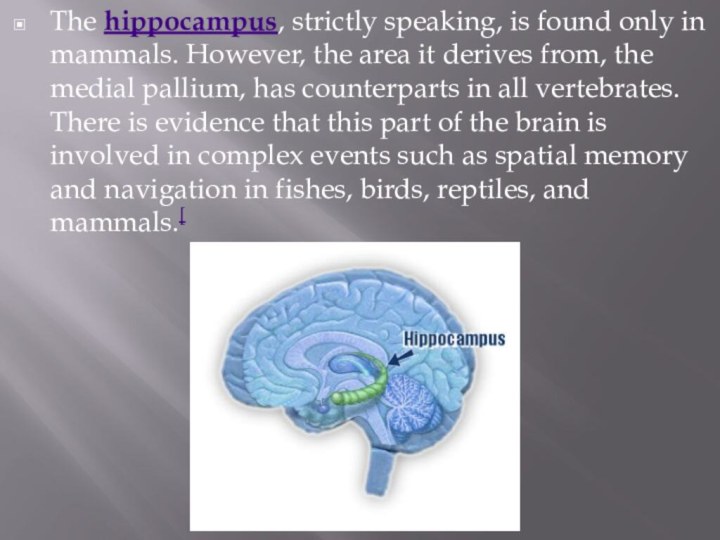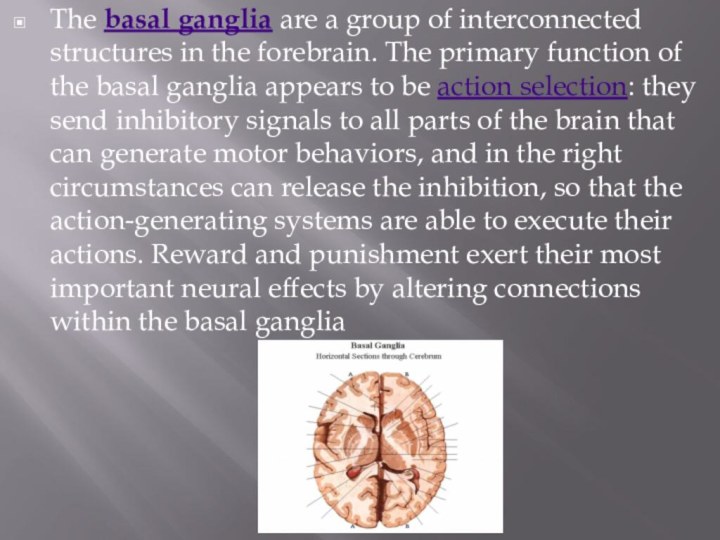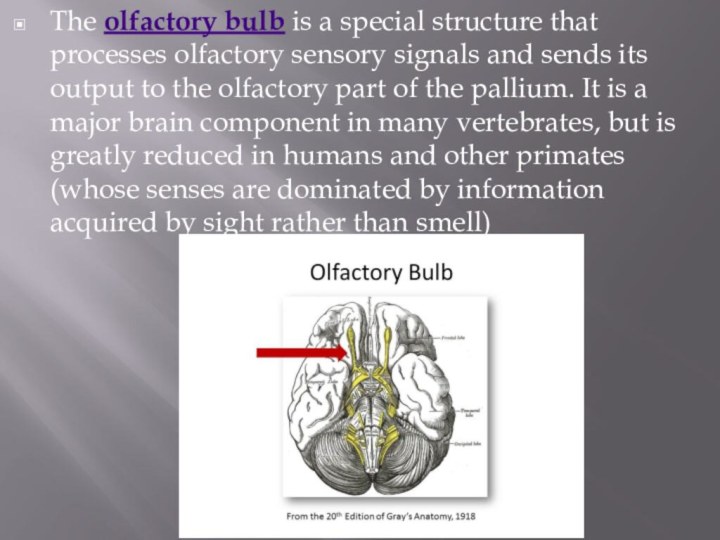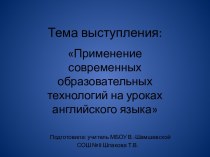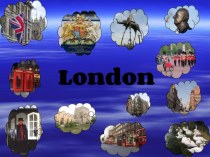- Главная
- Разное
- Бизнес и предпринимательство
- Образование
- Развлечения
- Государство
- Спорт
- Графика
- Культурология
- Еда и кулинария
- Лингвистика
- Религиоведение
- Черчение
- Физкультура
- ИЗО
- Психология
- Социология
- Английский язык
- Астрономия
- Алгебра
- Биология
- География
- Геометрия
- Детские презентации
- Информатика
- История
- Литература
- Маркетинг
- Математика
- Медицина
- Менеджмент
- Музыка
- МХК
- Немецкий язык
- ОБЖ
- Обществознание
- Окружающий мир
- Педагогика
- Русский язык
- Технология
- Физика
- Философия
- Химия
- Шаблоны, картинки для презентаций
- Экология
- Экономика
- Юриспруденция
Что такое findslide.org?
FindSlide.org - это сайт презентаций, докладов, шаблонов в формате PowerPoint.
Обратная связь
Email: Нажмите что бы посмотреть
Презентация на тему по английскому языку на тему Мозг
Содержание
- 2. The human brain is the central organ
- 3. The shape and size of the brain
- 4. The brains of all species are composed primarily of two broad classes of cells: neurons and glial cells.
- 5. Neurons are collecting electrical impulses
- 6. Gilal perform a number of critical functions
- 7. The medulla, along with the spinal
- 8. The hypothalamus is a small region at the base
- 9. The thalamus is a collection of nuclei with diverse
- 10. The cerebellum modulates the outputs of other brain systems,
- 11. The optic tectum allows actions to be directed toward
- 12. The pallium is a layer of gray matter that
- 13. The hippocampus, strictly speaking, is found only in
- 14. The basal ganglia are a group of interconnected structures
- 15. Скачать презентацию
- 16. Похожие презентации
The human brain is the central organ of the human nervous system, and with the spinal cord makes up the central nervous system. The brain consists of the cerebrum, the brainstem and the cerebellum. It controls
